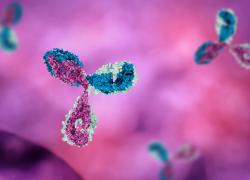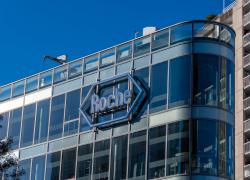
ASCO 2024 preview – two strikes against USP1
Tango cans TNG348 while Roche’s KSQ-4279 looks virtually inactive.
Tango cans TNG348 while Roche’s KSQ-4279 looks virtually inactive.

On the day Tango Therapeutics discontinued its USP1 inhibitor TNG348, citing liver toxicity, a just revealed ASCO abstract on Roche’s similarly acting KSQ-4279 has shown this project to have virtually no efficacy and a concerning toxicity profile to boot.
ASCO’s KSQ-4279 abstract represents the first ever human data on USP1 inhibition, a DNA damage response mechanism that attracted recent deal interest, and for this story to unravel so fast is concerning. The developments will be of great interest to Exelixis, which last year paid $80m for rights to Insilico Medicine’s ISM3091, now the industry’s next-furthest advanced USP1 inhibitor.
Roche gained rights to KSQ-4279 from KSQ Therapeutics last June, while the other USP1 inhibitor deal of note involved Debiopharm licensing Debio 0432 from Novo Nordisk. In March Simcere Pharmaceutical took SIM0501 into its first-in-human study, three months after Tango started phase 1 with TNG348.
Tango planned to test TNG348 monotherapy and a Lynparza combo in patients with BRCA1/2-mutant and other HRD-positive cancers. The company today decided to scrap the project after seeing grade 3/4 liver function abnormalities in monotherapy patients on study for over eight weeks (no patient had yet received the combination). Meanwhile, Exelixis’s ISM3091, now coded XL309, remains in phase 1.
64 patients
For its part, Roche not long ago highlighted KSQ-4279 as part of its DNA damage response portfolio, but the value of its KSQ deal hasn’t been disclosed. Given the early ASCO data this might be just as well.
The first-in-human study enrolled 64 patients with advanced solid tumours, enriched for deleterious HRR mutations, and tested KSQ-4279 as monotherapy, or in combination with Lynparza or with carboplatin. At a 4 January data cutoff only one (partial) response has been seen according to Recist criteria, and this came in the monotherapy cohort, which enrolled 42 subjects.
The abstract doesn’t state how many of the enrolled patients were efficacy evaluable, so it’s impossible to deduce an ORR number. But the lack of any other activity – the best results in the two combination cohorts have been stable disease – seems a poor verdict on this mechanistic approach, which some had hoped might synergise with PARP blockade.
True, this was a heavily pretreated population, and 29-71% of patients had received a prior PARP inhibitor. But safety doesn’t inspire much confidence either: 30% of the 64 patients had to have their KSQ-4279 dosing interrupted, and one subject discontinued treatment. Despite this, maximum-tolerated dose wasn’t reached (1.25g was the highest tested), and KSQ-4279’s safety profile was described as “acceptable”.
Other USP1 inhibitors include Impact Therapeutics’ IMP13, and since ApexOnco last looked at this space the industry pipeline had added four further preclinical assets: Xuanzhu Biopharmaceutical’s XZP-6924, VRise Therapeutics’ VRTX531, Laekna Therapeutics’ LAE120 and an unnamed USP1 inhibitor from Aigen Sciences, according to OncologyPipeline.
The KSQ-4279 abstract’s authors claim that pharmacodynamic results support the mechanism of action of USP1 inhibition. But without meaningful efficacy in patients, and given Tango’s early discontinuation, the mechanism is at best highly speculative, and at worst a complete non-starter.
The ASCO annual meeting takes place in Chicago on 31 May to 4 June.
7121













